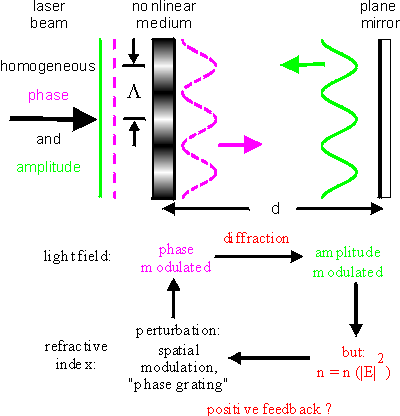Mechanism of the spatial instability
A laser beam with an initially homogeneous phase and amplitude distribution
is incident on a medium whose refractive index depends on the light intensity.
If there is a fluctuation in the refractive index distribution of the medium,
the transmitted wave will be phase-modulated. During the propagation to
the mirror and back diffraction couples the real and imaginary part of
the field and thus

converts phase modulation into amplitude modulation. Since the medium
is nonlinear it will react to this change of amplitude and positive feedback
is possible if the conditions are such that extrema of the reflected field
hit extrema of the modulation of the refractive index distribution with
the correct phase. Under this condition a macroscopic modulation can emerge
spontaneously from an infinitesimal small perturbation. The length scale
of the conversion between phase and amplitude modulation and thus the characteristic
wavelength of the pattern is given by the Talbot-effect.
|

